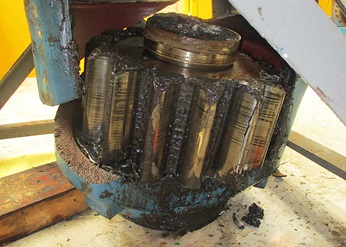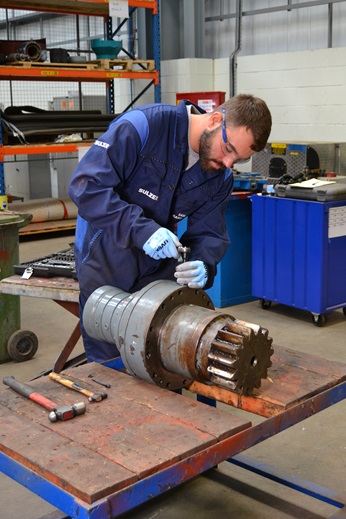Sourcing independent wind turbine maitenance
From generators to yaw drives, a turnkey solution for wind turbine operators
As more and more wind farm operators are released from contractual maintenance agreements, there is an increased awareness of the importance of responsive and proactive maintenance partners. After some installations have completed more than a decade of service, continued reliability and efficiency are dependent on fast and effective repairs.
Wind turbine generators offer a renewable source of electricity that is increasingly being adopted around the world. Located both on and offshore, these turbines are designed to deliver years of productive service, provided regular maintenance is carried out.
The expense of constructing and installing turbine fields is recovered over a number of years, during which the original equipment manufacturers (OEMs) provide maintenance services as part of the contract with the operator. However, the margins on which these power generation businesses are run, can be quite tight, making reliability an important factor.
Mark Westwood, Works Manager at Sulzer’s Middlesbrough Service Center, looks at some common issues and how to improve wind turbine reliability.
Wind turbine generators offer a renewable source of electricity that is increasingly being adopted around the world. Located both on and offshore, these turbines are designed to deliver years of productive service, provided regular maintenance is carried out.The expense of constructing and installing turbine fields is recovered over a number of years, during which the original equipment manufacturers (OEMs) provide maintenance services as part of the contract with the operator. However, the margins on which these power generation businesses are run, can be quite tight, making reliability an important factor.
Maintaining efficiency
Inside the nacelle of each wind turbine is all the equipment that is required to track the wind direction and keep the blades at the optimum speed to drive the gearbox and generator. This includes the safety systems that shut down the turbine in the event of excessive wind speeds or a failure of a component.Yaw motors are used to rotate the nacelle, relative to the tower, so that the turbine blades work as efficiently as possible. These motors are designed to work in pairs, so when one fails, the other takes on all the work of rotating the nacelle. This usually causes the other drive to fail fairly quickly after the first, leaving the wind turbine out of service.
The yaw drive gearbox is a multi-stage, epicyclic design, which offers a compact footprint and considerable torque output. However, if the output shaft becomes blocked for any reason, and the motor continues to turn, the torque windup causes the output shaft to snap.
Cost-effective solutions
While the turbines are under a maintenance contract with the OEM, any issues such as these would be resolved by replacing the yaw motors with new components. However, turbine operators are looking for the most cost-effective solution and once they are released from the contract, they are able to investigate alternative solutions.The first thought might be to contact the manufacturer of the yaw drive, but often they would offer a new part instead of a repair. The alternative is to engage an independent maintenance provider that has access to the OEM parts and can repair the yaw drive and install it.
In fact, the installation process is very important for this particular component. It is essential to set up the yaw drive correctly where the pinion gear engages with the ring gear on the tower. The fixing points of the drives are arranged so that the backlash of the gears can be adjusted. If the correct installation procedure is not followed there is an opportunity for a reduced service life of the yaw drives.
Unless the backlash is set the same for each pair of yaw drives, they will travel a different linear distance and effectively be working against each other. This can induce premature failure due to the increased fatigue in the materials.
Comprehensive service
In Middlesbrough, Sulzer has the expertise and the in-house capabilities to deliver repairs to almost all of the components inside the nacelle, including generators, motors, gearboxes and controls. With tower trained engineers, the company can deliver maintenance services to both onshore and offshore installations and, where possible, repairing components on-site.Working with OEMs, Sulzer can provide complete strip down, inspection, repair and testing of all components. For the yaw motors, parts can be turned around in under two weeks, easily covering the needs of the turbine operator, which usually hold some stocks of parts to cover unexpected breakdowns. If the customer agrees for Sulzer to hold a consignment stock of spare parts, repair times can be further reduced.
Today, operators and asset management companies are looking for high-quality repairs and preventative maintenance to promote reliability and efficiency. This can be achieved by engaging with experienced maintenance providers that have the facilities and expertise to deliver services wherever they may be required.
Middlesbrough Service Center
Sulzer Electro Mechanical Services (UK) Limited
Barton Road, Riverside Industrial Estate
TS2 1RY Middlesbrough, Cleveland
England


